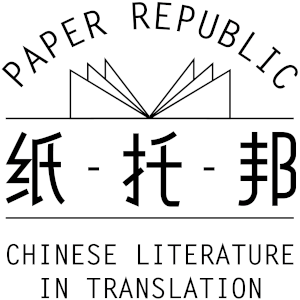The Petitioner
Sample translated by Violet Law
BEIJING HAS been the graveyard of hope for countless petitioners who come in their hundreds of thousands every year to seek justice. Many end up in what have become known as petitioner villages, one of the most prominent of which lies alongside the optimistically named Good Fortune Road, near Yongdingmen, on Beijing’s west side.
They come from the four corners of the nation, descending upon the petition offices of the central government’s many ministries, hoping to air their grievances and see justice served. Few find satisfaction, though; it is estimated only about one in 500 petitions brought to Beijing results in a resolution of any kind. Many petitioners are forced to return home by “interceptors” sent by regional governments, to face punishment.
Petitioning is a Chinese custom that dates back centuries; as early as the Zhou dynasty (1045BC to 256BC) people were banging drums and kneeling before visiting mandarins’ carriages to draw attention to their plight. The tradition lives on because it’s the only recourse for ordinary people unable to vote and in a corrupt system full of legal loopholes. By appealing to a higher level of bureaucracy, petitioners hope for resolutions denied them in their home provinces. The practice is also rooted in the belief that absolute power does not corrupt and only a powerful wise man or benevolent leader can hand down justice.
Every year, more than 500,000 petitioners travel to the capital – the vast majority from the impoverished countryside – in search of a “saviour”. Also, untold thousands head to provincial seats of government but those who converge on the mainland’s cities and towns are only the most visible of the country’s aggrieved; the State Bureau for Letters and Calls, the government body handling petitions nationwide, receives more than 10 million annually.
Nearly 80 per cent of the petitions allege mismanagement within local government. The stories behind the petitions – a selection of which have been documented by The New York Times photographer Du Bin and published in the Chinese-language book The Petitioner – Living Fossil Under Chinese Rule by Law – are varied and often tragic. They encompass family and land disputes, official corruption, legacies of the Cultural Revolution, forced relocation, cruel punishment and murder.
However, more often than not, petitioners are treated as enemies of the state. Many have been locked up for weeks in unofficial prisons; some of the most recalcitrant have been committed for life to a mental institution. Nearly all think the officials designated to meet with them pass the buck when they can get away with it.
In recent weeks, Beijing has been trying to pass that buck back to the local level. Partly to put an end to a system so obviously flawed and partly to maintain peace and order during the celebrations for the 60th anniversary of the People’s Republic of China, the central government last month issued an edict demanding provincial officials resolve petitions locally and swiftly. Communist Party legal officials will visit areas with a high number of petitioners who come to Beijing and will accept cases on the spot, according to Xinhua news agency. The edict may also lead to petitioning in the capital being made illegal.
Edict or no edict, the majority of petitioners hold out little hope of ever being heard by Beijing officials. And yet many have lingered for years in the capital, in de facto exile. Petitioning has become their raison d’être…
[Originally published in the South China Morning Post magazine]

